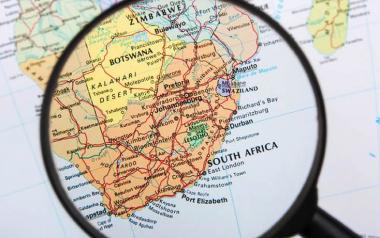
South Africa’s real Gross Domestic Product (GDP) is expected to grow by an average of 2.1 % in 2022, finance minister Enoch Godongwana said on Wednesday.
The country’s real Gross Domestic Product (GDP) is expected to grow by an average of 2.1 % in 2022, finance minister Enoch Godongwana said on Wednesday.
However, GDP is expected to grow by an average of 1.8 % over a three-year period.
The upward revision comes after the National Treasury had projected the GDP growth to grow at an average of 1.7 % over a two-year period when it tabled its Medium Term Budget Policy Statement (MTBPS) in November last year.
“We have revised our economic growth estimate for 2021 to 4.8%, from 5.1 % at the time of the MTBPS.
“This revision reflects a combination of the impact of changes in the global environment, along with our own unique challenges.
“Commodity prices, which have supported our economic recovery, slowed in the second half of 2021. Also, violent unrest in July, and restrictions imposed to manage the third wave of Covid-19 further eroded the gains we made in the first half of the year,” he said.
Meanwhile, National Treasury said that significant risks to the outlook include the emergence of new Covid‐19 variants in the context of low vaccination levels, rising global inflation, and continued disruptions to power supply.
The National Treasury also said that longstanding structural constraints entrench South Africa’s high levels of poverty and unemployment. The government continues to advance a multifaceted strategy to achieve higher and sustained economic growth rates.
“These reforms are intended to build private‐sector confidence and investment. The combined impact of structural reforms, support for small business and new infrastructure investment will enable higher rates of growth and job creation over the long term.
“Over the next three years, government will introduce additional measures to improve the delivery of public infrastructure and attract private capital,” Treasury said.
In addition, the government will over the next three years, devote considerable attention to strengthening the fight against corruption flowing from the reports of the State Capture Commission, cutting red tape for small businesses and strengthening the green transition.
“In line with government’s international and domestic commitments to climate change adaptation and mitigation, the National Treasury plans to pilot a climate budget tagging methodology, which can inform future spending priorities and budget reforms.”
Inflation
Headline inflation is projected at 4.8% in 2022 and 4.4% in 2023, National Treasury said.
This is attributed to food and energy prices, especially municipal rates from rising electricity prices, high domestic food inflation and elevated fuel prices, which are expected to be the key sources of inflationary pressure in 2022.
“Fuel prices were up 40.4% in the year to December 2021 owing to higher global crude oil prices. Fuel prices are expected to ease during 2022, but [they] remain elevated and above the 2019 average price level.
“Global supply-demand imbalances triggered an acceleration in the price of raw materials and intermediate inputs, which will continue to put upward pressure on consumer inflation.
“Medium‐term risks to the inflation outlook are to the upside, primarily as a result of price pressures from food and non‐alcoholic beverages, along with petrol, energy and other administered prices.
“Although the forecast assumes 2022 and 2023 electricity prices rise in line with Eskom’s application for a tariff increase in 2022/23, there is a risk that electricity inflation may exceed the assumption due to increasing costs of ensuring electricity supply,” said Treasury in the Budget Review document.
Household consumption expected to grow by 2.5% in 2022
Treasury said, meanwhile, that household spending is estimated to have grown by 5.6% in 2021, following a contraction of 6.5% in 2020.
Spending levels were recovering until July 2021, but fell in response to the public violence, and remain below pre‐pandemic levels.
Consumer confidence declined, and retail operations and supply chains were severely affected, Treasury said.
“Household consumption is expected to grow by 2.5% in 2022.
“Over the next three years, it is supported by sustained growth in private‐sector wages, growth in household credit extension and relatively low borrowing costs.
“Consumption is supported in the near term by the extension of the special COVID‐19 social relief of distress grant in 2022/23, and a relatively mild fourth wave of infections, followed by further easing of COVID‐19 restrictions at the end of 2021.”
Treasury said, however, that a weak employment outlook and higher inflation are likely to limit the pace of recovery in 2022.
“Sustained GDP growth and job creation are needed for higher consumption.”










